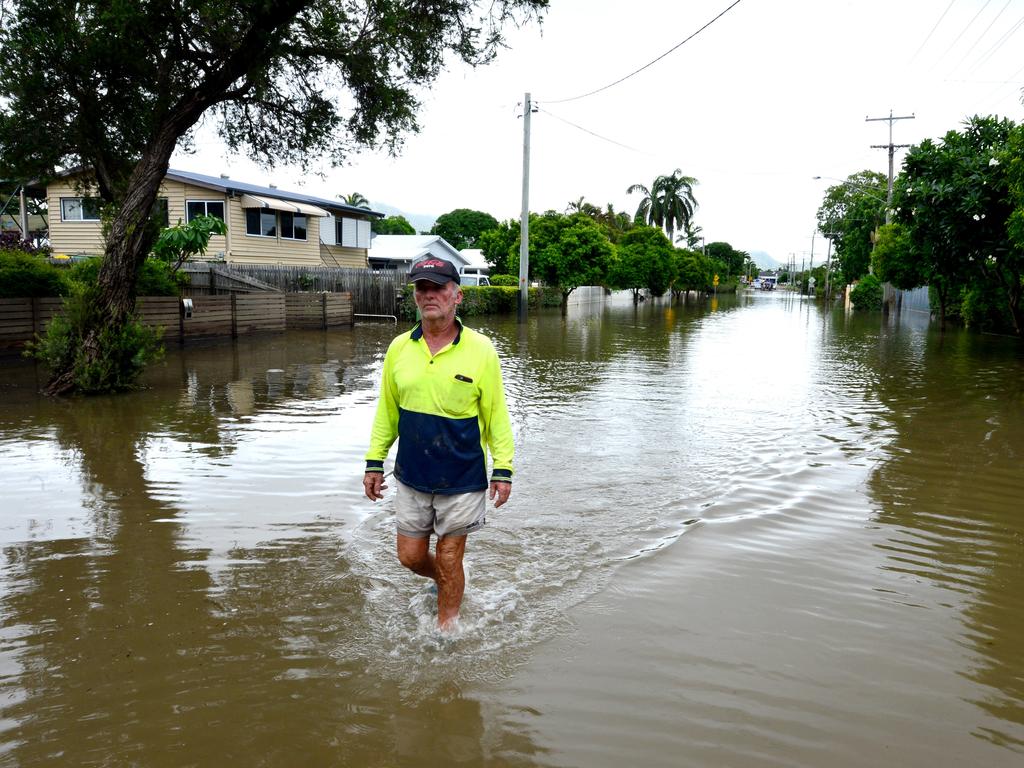Townsville floods: Concerns over influx of mosquitoes
As the immediate danger from Townsville’s flood disaster fades, it has been replaced by another more insidious threat.
QLD weather news
Don't miss out on the headlines from QLD weather news. Followed categories will be added to My News.
CONCERNS have been raised around the influx of mosquitoes around far north Queensland following days of heavy rain and flooding.
Queensland Health has warned residents to use insect repellant during the cleanup, and empty any containers which may be full of floodwater.
Townsville floods: Weather bureau’s forecasts slammed, Mayor condemns thefts
Aunty says her nephew and his friend ‘didn’t deserve to die’ in Townsville’s flood disaster
Rosslea grandma loses almost two decades of possesions in Townsville floods
“Mosquitos, capable of transmitting diseases, might be more common after a natural disaster, so be sure to cover up with long and loose clothing, and use insect repellent,” a Queensland Health spokesperson said.
“Once the clean-up has begun, it’s also important to take action and eliminate mosquito breeding sites.
“Rain or floodwater may have collected in containers around people’s yards, providing an ideal place for mosquitoes to breed.”
It comes after Australian scientists developed a mosquito resistant to spreading the devastating Zika virus.

CSIRO scientists, in conjunction with the University of California San Diego, engineered mosquitoes to be resistant to spreading the virus which caused more than 4000 cases of serious birth defects in 2015.
CSIRO senior research scientist Dr Prasad Paradkar said the new study could one day half the spread of Zika.
“Our study found the mosquitoes with an anti-Zika gene were unable to pick up Zika when they fed, so they were incapable of spreading the virus to anybody else,” he said.
“With further investigation, this mosquito could potentially one day be used to replace populations of wild Aedes aegypti, adding to the arsenal of control strategies against this mosquito to halt the virus’ spread around the world.”
Authorities warned there had been a spike in soil-borne disease cases in far north Queensland last year, and warned people from walking in puddles.
Tropical Public Health Services (Cairns) director Richard Gair said there had been six confirmed cases of melioidosis in the region so far last year, one fatal.

There have been nine confirmed cases of leptospirosis since the start of the year.
Dr Gair said both were caused by bacteria typically found in soil and muddy surface waters.
He warned heavy rain increases the risk of melioidosis and leptospirosis and to avoid playing in puddles.
The disease warning came as Townsville Mayor Jenny Hill revealed the city’s flood event was five times as big as first thought.
Ms Hill said a team of experts was analysing flood data, but “it is clear that the flood levels in the Ross River were greater than a one-in-500-year event” – up from the initial one-in-100-year estimate.
Ms Hill added that some rainfall totals over the Ross River Dam catchment in the past week were “in excess of a one-in-2000-year rainfall event”.
Queensland Fire and Emergency Services Minister Craig Crawford yesterday announced he would ask the inspector-general to conduct a review of the flood that would also assess the operation of affected dams, including the Ross River Dam.
“There are always lessons that can be learned from events like this,” he said.
It comes after Member for Burdekin Dale Last claimed the Bureau of Meteorology’s forecasts had been “woeful”, and that Alligator Creek south of Townsville had received lower-than- expected rainfall on Monday.
But the bureau yesterday rejected Mr Last’s comments, saying the area south of Townsville had received 45mm in the 24 hours from 9am on Monday.
Townsville is expected to receive between 10mm and 20mm today, with sunnier conditions forecast for tomorrow.
As the clean-up continued yesterday, Townsville residents were told that if water had entered walls and caused mould, they would be eligible for the Federal Government’s $1000 disaster assistance grant.
More than 250 homes have been deemed completely uninhabitable, while more than 730 were severely damaged.
Premier Annastacia Palaszczuk yesterday visited Cloncurry, where drought-weary graziers were losing cattle to extreme rainfall.
“The conditions out here are unprecedented,” she said.
“They (graziers) have just come out of drought and they’ve gone into a natural disaster.”



